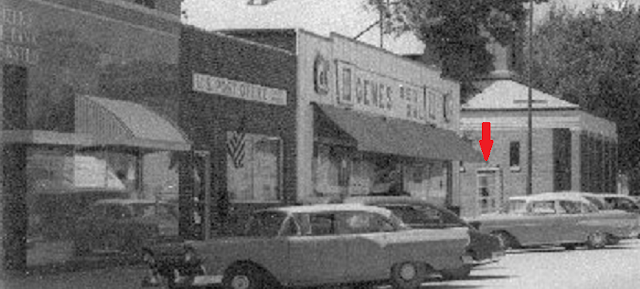© Mark Ollig
It has the appearance of a finely hand-crafted, well-made piece of antique furniture, and reminds me of early 20th-century artistry and innovation.
It reflects the dedication of those who brought telecommunications to the people living in large cities, small towns, and rural areas throughout the United Kingdom (UK).
The British call it a telephone box or kiosk.
Living in the US across the big pond from the UK, we call it a payphone booth.
Initially, all UK postal mail was under the sole control and operation of the UK’s General Postal Office or GPO, which Britain’s Charles II established in 1660.
When telegraph and telephone became available, they came under the GPO umbrella.
Those old British telephone boxes hold a particular fascination with me. So, over the last few years, I have been collecting photographs of them and visiting various UK websites to examine their history.
Some of the allure I have about them is due, in part, to the amount of time I spent installing and repairing the payphones in my hometown when I worked at the local telephone company.
The British highly regard their beloved red telephone boxes as landmarks and an essential part of their symbolic history.
Before Britain installed the first telephone box, they used an outdoor mail letterbox or “pillar box,” painted green; however, these mail letterboxes blended in too much with the green tree and grass landscape, and folks had difficulty finding them.
The UK post office decided in 1874, to repaint all the existing mail letterboxes a bright red, invoking the term “pillar box red.”
In 1921, the first public outdoor British telephone box (booth) was called Kiosk No. 1 (K1).
This kiosk telephone box used reinforced concrete and had a wooden entrance door with two sides of paneled glass held in place by wooden muntin or glazing bars.
One of the distinguishing features of this particular telephone kiosk was its spiraling, spear-like ornament atop its roof.
Rooftop signs with TELEPHONE were attached to some K1 models starting in 1924.
These earlier telephone boxes were usually painted red, although I have seen some with added colors accommodating the local surroundings.
In 1927, Britain installed brightly red-painted cast iron K2 telephone boxes with white enamel painted inside underneath the roof along the streets of London.
Along all four sides of the top of the kiosk, it showcased the royal crest of King George V.
Today, the K2 telephone boxes in London are preserved in the same manner we keep buildings as national historic landmarks.
In 1931, K1 telephone boxes were no longer being installed.
By 1936, the K2 had become obsolete, having already been replaced with the K3.
The K3, with a domed roof, was primarily made out of concrete and was first introduced in 1929. It was intended for use in the more rural and urban areas outside London.
The K3 was greyish, with the window frames painted red.
It was later learned concrete was not a very suitable material for an outdoor telephone kiosk, and thus, the K3 was the last telephone box to be made with it.
In 1935, to commemorate the Silver Jubilee of the coronation of King George V (June 22, 1911), a K6 Jubilee Kiosk was commissioned, and Sir Giles Gilbert Scott designed it.
The K6 telephone box was made of cast iron, was installed in 1936, and contained a D 3001-type telephone made from black Bakelite plastic, an electric light, and an A/B pushbutton coin collection box which was bolted to the wallboard.
The outer portion of the K6 was decorated with crowned ornaments and panels, painted red, and topped off with a domed roof.
Before the end of the 1930s, more than 20,000 of these popular K6 telephone boxes were located throughout Great Britain.
Today, all telecommunications within the UK are the responsibilities of British Telecom.
Many of today’s British payphone boxes are used as Wi-Fi and smartphone recharging stations, and collectors are paying large sums of money for early 20th-century British telephone boxes.
Back in the US, in downtown Hartford, CT, a small blue sign is attached to the side of a brick building located on the corner of Main Street and Central Row, which reads, “World's First Pay Telephone. Invented by William Gray and Developed by George A. Long, was installed on this corner in 1889.”
In my hometown of Winsted, the first outdoor payphone booth was located on 1st St. N., directly north of the former Gene Paradis’ Red Owl and later G&K grocery store building (which no longer stands).
The property is currently the Security Bank & Trust Co. outdoor drive-thru ATM/teller lane entrance. The payphone booth was located about 15 feet south of the oak tree which is still there today.
Although the hometown payphone booth installed so many years ago is no longer there, for me, it still seems like yesterday when I drove up next to it in my telephone truck.

